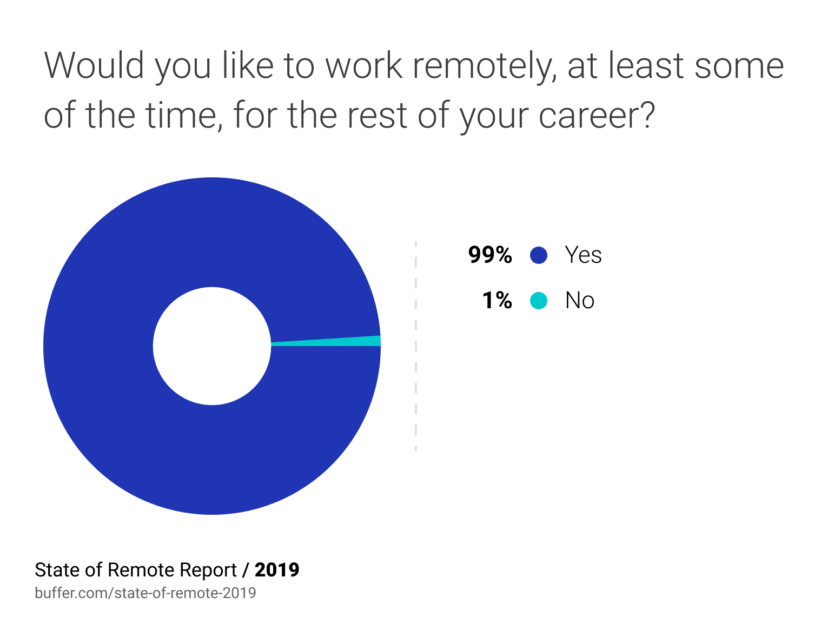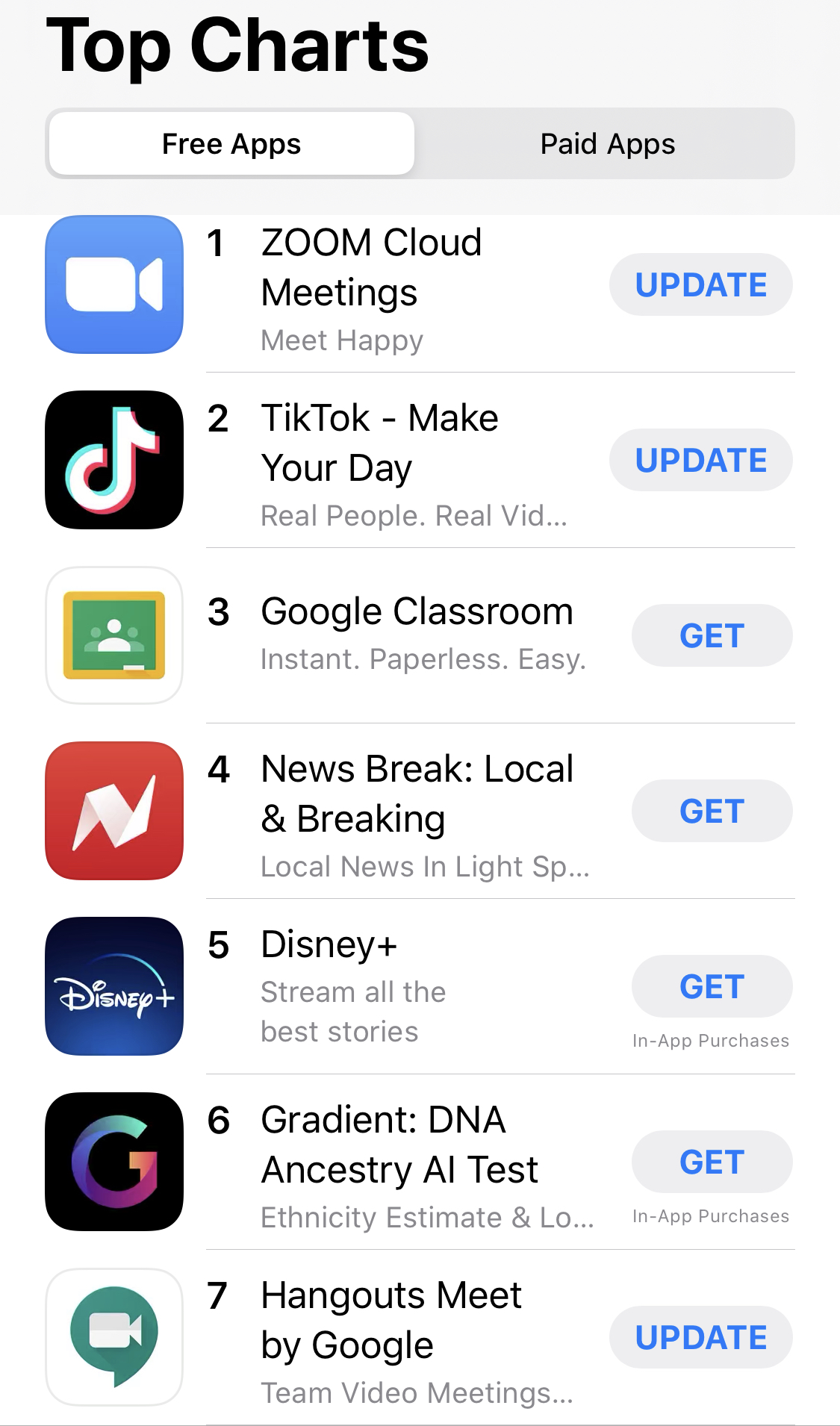The fear, uncertainty and social distancing measures caused by the COVID-19 epidemic are taking their toll on our lives and global economy. Businesses of all sizes have or will feel the impact, especially small and medium-sized businesses, whose initial reaction might be to pull back on new initiatives or even halt operations. This downturn, however, could be an opportunity for the resilient. As disturbances in the status quo shift the playing field, the most innovative and creative forces can get ahead and still find success.
Warren Buffet once said, “Be greedy when others are fearful.” Companies shouldn’t necessarily see consumer fear and panic as something to capitalize on, but the point stands that yielding to fear will produce stagnation and regression while maintaining the vision that cuts through emotion will serve you well. As consumer behavior changes due to the social distancing measures mandated by companies and local governments, businesses will need to learn how to adjust to their behavior. Moreover, businesses will need to understand what true empathy and adaptability mean by stepping into the consumers’ shoes: What are your consumers thinking right now? How can your business meet them where they are at and alleviate a burden or provide new value? Agility and adaptability are winning keys in this time, which is good news for startups who can find gains and offer value in a downturn. This article will cover the areas of opportunities in a downturn caused by COVID-19 and how brands can capitalize on these opportunities.
Understanding the Consumer Mind Shift
This is an unusual moment in history. We are not only facing a downturn caused by some fiscal policy or Wall Street. We are dealing with two types of critical fears at once:
- Fear for our health and wellbeing
- Fear for our jobs and the downturn we see unfolding
Marketers may forget that clever ads and appealing products alone don’t bring rising sales. Increased sales depend on a number of factors: consumers having disposable income, feeling confident about their future and financial situation, trusting the economy, and adopting lifestyles and values that encourage consumption.
With several states mandating the close of “non-essential” businesses, consumers are primed to allocate their focus to products and services that aid self-preservation. [dt_highlight color=”” text_color=”” bg_color=””]Most consumers deem basic levels of food, medical care, education, shelter, clothing to be essentials, but demand for goods and services beyond that is highly elastic.[/dt_highlight]
It’s important to remember that a [dt_highlight color=”” text_color=”” bg_color=””]downturn or a recession affects minds before wallets[/dt_highlight]. For businesses in more “luxury” categories, such as DTC wellness and personalization, consider repositioning luxury offerings in a different light of value to help retain customers who might feel social pressure to cut out luxury. For example, an at-home workout system like Mirror could speak to the mental health benefits of exercise, giving statistics on how working out reduces anxiety and improves mood in this time of high stress and isolation.
Remote Work Is The New Reality
[dt_highlight color=”” text_color=”” bg_color=””]The workforce, to be precise 99% according to Buffer, prefer to have the option to work remote.[/dt_highlight] Remote work has been a trend among tech and startup community, but faced stigma and strong non-believers in various sectors. Due to COVID-19 and the enforcement of social distance measures, companies and employees are forced to do a trial of remote work and build habits and processes around it. Though only a couple of days in, this “forced trial” has proven that it is, in fact, possible for businesses to function remotely. This means investing in the tools that will provide a seamless management experience, like Zoom, Slack, and Asana.

Source: Buffer state of remote work
Beyond the tool, consider the team processes you would want to put in place to keep engagement and morale high. The physical distance may cause employees to feel mentally and emotionally distant from their work as well. Scheduling regular calls to align on goals, check-in on how teams are feeling, celebrate wins, and tackle challenges collaboratively keep communication, expectations, and, most importantly, sentiment strong. The more you can foster a “human-to-human” feeling experience, the more it will benefit everyone all around.
Adapt to the Digital-First Market
The vast majority of processes are going digital due to the need for social distancing. Digital is not a nice-to-have, but a necessity: People who never purchased online are relying on it as physical stores run out of stock or shut down completely. [dt_highlight color=”” text_color=”” bg_color=””]JD.com, China’s largest online retailer, has seen sales of common household staples quadruple over the same time period last year[/dt_highlight]. People who never needed to work from home are mandated to work remotely and communicate digitally. If your product or service traditionally required the consumer to show up physically, think on how to convert the experience online in a streamlined way. For example, bringing in-store consultants, like Apple employees, on virtually to help consumers through a website or converting in-person fitness classes like Classpass or CoreYoga, to live sessions users can sign into. This kind of quick adaptability could save customers you would normally lose in the transition. Here is how fear and social distancing measures, for example, have changed the top apps on IOS. Zoom has topped TikTok in most downloaded free apps.

Industries Positioned for Growth
Productivity, Collaboration SaaS
Examples: Zoom, Slack, Monday
Food & Food Delivery
Examples: Amazon and FreshDirect are working around the clock to meet the unprecedented demand.
Home & Cleaning Supplies
Examples: Purell, Lysol, Mr. Clean, Seventh Generation
Medical Supplies
Examples: 3M, Johnson & Johnson, McKesson
Telemedicine & Pharmacy
Examples: Forward Health, Amwell, Duane Reade
Content Platforms
Content platforms have seen a spike in watch time and daily active users
Examples: Youtube, Netflix, Hulu, HBO Go, Disney
Remote Learning Platforms
Examples: Google classroom, iRule, Audacity
Pharmaceutical Biotech
Examples: Pfizer, BioNTech
Industries that were impacted most
- Travels (hotels, restaurant, cruises, airlines)
- Entertainments (bars, clubs, casinos, events, live shows)
- Luxury Goods
- Co-working
- Sports (NFL, NBA, Premier League)
- Transportation
Now that you understand the market and consumer mind shift, it’s time to look for a unique positioning for your brand and product that fits within these new dynamics.
Helpful Tips for Keeping Your Company Strong Amid the COVID-19 Crisis and Downturn to Follow:
Think Carefully Before Sending that Corona Email Update.
No one likes an irrelevant interruption during an intense moment. If you don’t have an important update like store closure, change in pricing or shipping expectation, something that is going to impact the consumer, you haven’t earned the right to interrupt your consumer and invade people’s inbox. Make sure to pick the right email list or segmentation for your update. Avoid being one of these brands that everyone been tweeting about.
It’s clear that the consumer’s inbox is likely flooded with COVID-19 updates, so now would not be the best time to announce a new partnership or launch, which seems less pertinent or urgent in comparison. If it makes sense for your brand, show up in your subscribers’ inbox with valuable information- tips, tactics, strategies- that show you care more about their well-being than the sale. Also, social media consumption has been increasing during the social distancing period, making these platforms more appropriate for putting out fresh content about brand updates.
Adjust your projections for short & long Term
According to most health experts and government officials around the globe, the impact of Coronavirus extends beyond one or two weeks. The repercussions are expected to last for months. Businesses need to get ahead of the curve and develop a plan with multiple scenarios for months to come: 1 month, 3 months, 6 months from now. Prioritize the arms of the business that are sure wins and fit best for this time period and place on the back-burner others that will take extraordinary effort to be fruitful. If Q2 goals are dampened by these extenuating circumstances, brainstorm activations to launch in Q3 and Q4 that may be feasible if there is recovery.
Honor Cash Flow as Queen & King.
Cash flow is the lifeblood of any business. You can continue as closely as possible to business as usual when finances are healthily flowing. Be sure to wisely plan financial decisions with the long-term picture. Your top priority is to ensure that you can continue to get as much of that cash flow as possible for your business to continue to run. Cut all the unnecessary spending and pay more attention to your runway. Investigate areas of waste or strategize on how optimization areas can stretch the company’s dollar. If your cash flow is not looking good, make sure to have a line of credit as a backup.
Give Back If You Can
Think about how your business can extend the olive branch and help those affected by the coronavirus. Internet providers are giving away free wifi to students, restaurants are cooking free meals to feed those in need. U-haul is offering free storage to students displaced from their dorms. Organizations like GiveLocal have risen up, in which consumers can buy gift cards to support restaurants that are struggling to sustain their business with 60-80% of their traffic lost. What can your business do to help those in need and for your community to know that you are there for them? You may gain an influx of customers who are willing to continue with your services once this time passes because of the kindness you showed.
Lean on Government Relief Funds
The government is aware of how deeply COVID has affected the population and is keen to help small businesses specifically. Congress has approved a small business relief fund. Facebook announced a 100 million dollar program to help small businesses impacted by COVID-19. These projects and funds are for your benefit so be sure to maximize the assistance. In an economic downturn, the primary thing governments do is to accelerate spend to get the economy back on track and that means spending on various public projects which could benefit businesses of all sizes, at least on paper.
Invest in Your Best Employees & Customers
Recessions incite great fear in employees around losing their job due to recessions. Inspire them with fulfilling work that offers long term value for your brand or provide them with the training they need to expand their skillset. Replacing your best employees is very expensive, so build up your current team to come out better and stronger as a result of this season.
Don’t forget to love your existing customers. You already do…but even more than usual. On a similar note to the above point, invest in your best customers, prioritizing their happiness and loyalty. You might need to make exceptions that you would not consider before – free cancellation or shipping, etc. Ensure that you are positioning them for success in this downturn and gain their long term alliance because your company provides such long-term value. Replacing your best customers is also very expensive.
Optimize Your Conversion Funnel & Stop the Leaks
Healthy cash flow comes from a healthy conversion funnel. In a downturn, for most businesses, the number of ideal buyers naturally goes down. Make sure to convert the highest percentage possible when they fall into your funnel. You can do that by ensuring proper tracking and optimizing across top-funnel spend (where to get the most out of your budget), messaging and positioning (adjusting your messaging to the current mood, consumer behavior, and market shifts) optimize your user journey and create a frictionless conversion flow. Don’t be discouraged by your metrics but understand what your new normal is.
Pay Your Product or Funnel Tech and Data Debt
Tackle data debt and automation issues accumulated through years of rapid growth that you cannot typically fix when your resources are spread too thin. Run the small, low-risk experiments that have been on the back burner for a while now. Capitalize on the time you have to do tasks like website or product redesign, rebranding, CRM integration, etc. These updates could be highly disruptive and also allow for efficient utilization of existing resources while things might be slower than usual.
Invest in Organic Growth & Brand Community Building
If your startup is heavily running on paid campaigns, it’s time to think for an alternative when this money dries out. You may be unable to afford to continue with high CACs, and investors will be more aggressive with CAC burn on paid channels. Make investments in more effective growth channels like SEO, partnerships or referrals that can boost your presence for you. Prioritize high-quality content- be it strong blog copywriting or attention-grabbing video and look for avenues to build a community through podcasts or online forums. In this time of social isolation, especially, consumers crave a deeper sense of connection to the people and things they love. Fostering an authentic relationship with your audience fortifies that loyalty.
Acquire the Ones That Can’t Afford To Keep Going
Other startups burdened with financial weaknesses like poor cash reserves, a bad debt structure, mismanagement or inflexible cost structures may be good acquisition targets. Your brand can acquire new technology, patents, market segments or even complementary brands in a recession that would be unavailable or unaffordable during an expansion. Make sure your current infrastructure is strong enough to carry both agendas.
Start a New Venture All Together
A downturn or a recession can be the best time to launch a new brand or venture because the competition is less intense. During a recession, most businesses focus on cutting costs and keeping the lights on and most investors are not willing to take risks. Brands like Netflix and Hyundai were started during recessions and came out of these recessions strong. What gaps are present in the market? Is there a way for you to fill them?
Many brands run on founders, partners, and investors’ personal brands. Maybe it’s time to create your own content and share what you always wanted to share but were too busy to do it. Necessity is the mother of invention, after all.
“Risk comes from not knowing what you’re doing.” – Warren Buffet
No matter the size or industry of your business, you can still prevail in this time of coronavirus with refined strategies. If you cut through the fear and noise and keep the main goal of serving customers well at the forefront- even if that means switching up a thing or two- you can and will find ways to succeed.
We are in this together ????. Stay healthy!






